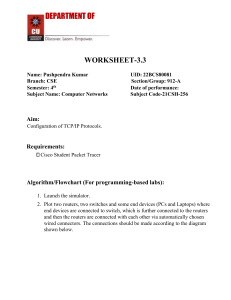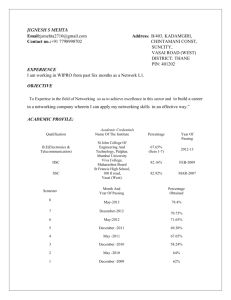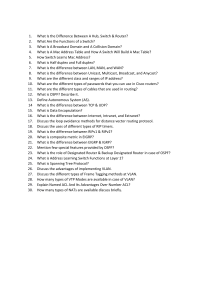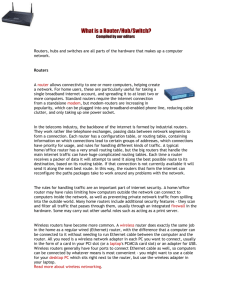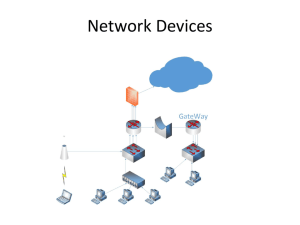Chapter 5: Networking Components Overview
advertisement
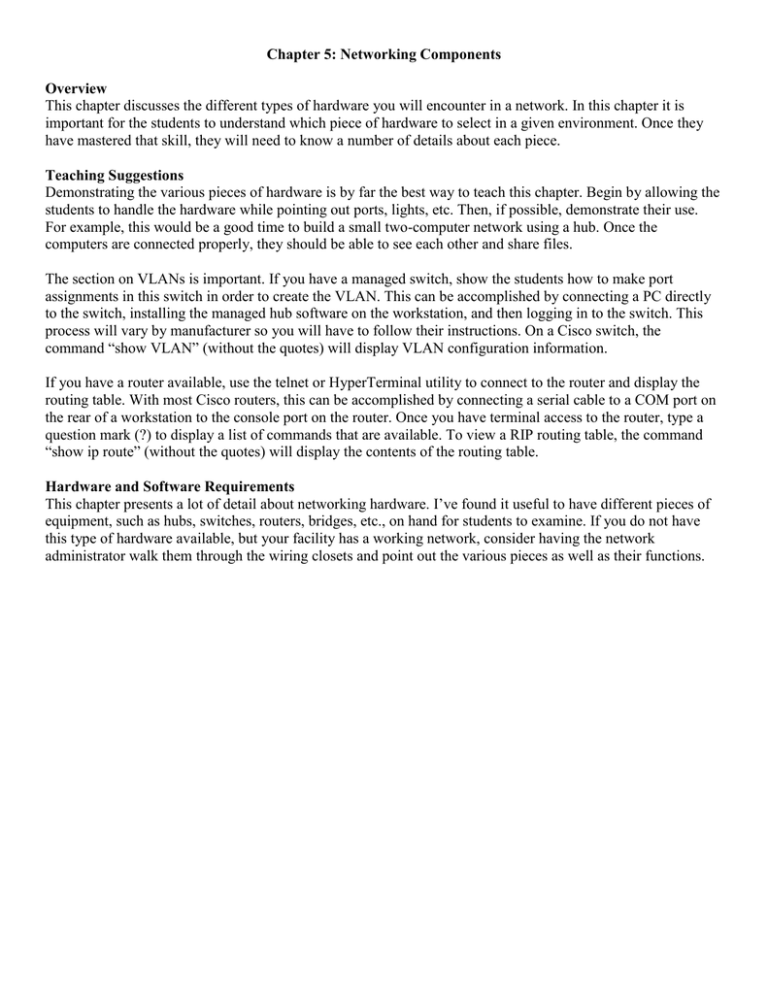
Chapter 5: Networking Components Overview This chapter discusses the different types of hardware you will encounter in a network. In this chapter it is important for the students to understand which piece of hardware to select in a given environment. Once they have mastered that skill, they will need to know a number of details about each piece. Teaching Suggestions Demonstrating the various pieces of hardware is by far the best way to teach this chapter. Begin by allowing the students to handle the hardware while pointing out ports, lights, etc. Then, if possible, demonstrate their use. For example, this would be a good time to build a small two-computer network using a hub. Once the computers are connected properly, they should be able to see each other and share files. The section on VLANs is important. If you have a managed switch, show the students how to make port assignments in this switch in order to create the VLAN. This can be accomplished by connecting a PC directly to the switch, installing the managed hub software on the workstation, and then logging in to the switch. This process will vary by manufacturer so you will have to follow their instructions. On a Cisco switch, the command “show VLAN” (without the quotes) will display VLAN configuration information. If you have a router available, use the telnet or HyperTerminal utility to connect to the router and display the routing table. With most Cisco routers, this can be accomplished by connecting a serial cable to a COM port on the rear of a workstation to the console port on the router. Once you have terminal access to the router, type a question mark (?) to display a list of commands that are available. To view a RIP routing table, the command “show ip route” (without the quotes) will display the contents of the routing table. Hardware and Software Requirements This chapter presents a lot of detail about networking hardware. I’ve found it useful to have different pieces of equipment, such as hubs, switches, routers, bridges, etc., on hand for students to examine. If you do not have this type of hardware available, but your facility has a working network, consider having the network administrator walk them through the wiring closets and point out the various pieces as well as their functions.
